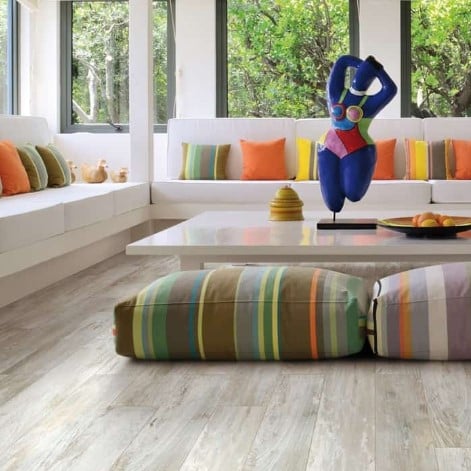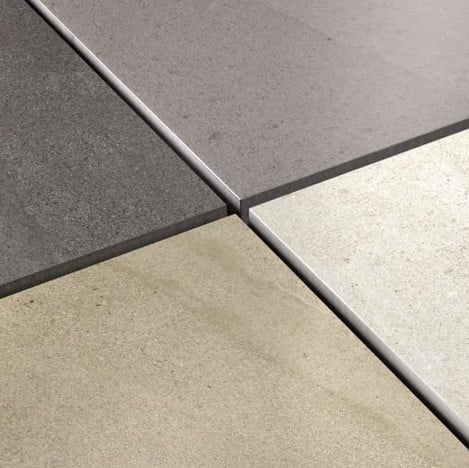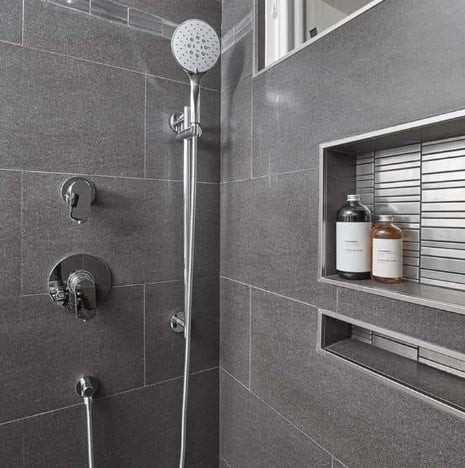
When shopping for new porcelain or ceramic tile for your home, you may have come across the phrase “rectified porcelain.” If you’re wondering what it means, you’re not alone! Let’s clarify what this term means and look at the differences between rectified and non-rectified porcelain.
How is Rectified Porcelain Made?
The term “rectified” simply refers to a manufacturing process where the edges of porcelain tiles are ground or cut to minimize size variations between tiles.
Why is this process done? When porcelain and ceramic tiles are fired at high heat in a kiln, they can develop slight size variations due to normal shrinking and warping during the process. Size differences of up to 1.5% are considered normal from tile to tile.
So, to ensure each tile is exactly the same size, rectification involves grinding, sawing or laser-cutting the edges of the tile. This creates uniformity in size, removes the normal variations along the tile edge, and ensures sharp, 90-degree corners.

Rectified vs. Non-Rectified Tile: What’s the Best Choice for You?
Rectified tile is not necessarily a “better” choice—it’s just a relatively new process that has made certain aesthetics possible. Namely, the precision-cut edges and sharp corners of rectified porcelain make very thin grout lines possible, as the tiles can sit much closer together (as little as 1/16th of an inch). This creates a clean, symmetrical, seamless appearance that some modern homeowners prefer.
To help you make a decision that makes sense for your space, style and budget, let’s summarize the pros and cons of rectified and non-rectified tile.

The Bottom Line
Rectified porcelain tile may be the best choice for your project if you:
- Want thin grout lines
- Want sharp, precise edges for a sleek, seamless look
- Are installing large-format tile (tile larger than 15” on any side)One downside of rectified tile is that it can be more expensive. In addition, if you want minimal grout lines, your subfloor should be as level and flat as possible to avoid lippage (a term used to describe tile that sticks up higher than the tile beside it), as this effect can be more noticeable without standard grout lines.
Non-rectified porcelain may be a good choice if you:
- Prefer standard-width grout lines
- Want a more casual or rustic look
- Are working with smaller tile or a smaller installation
- Know your subfloor is not very flat
- Have a more limited budget





